How dental products can empower a practice
How different dental products give clinicians and practices the superpowers they need to provide optimal care and promote business success.
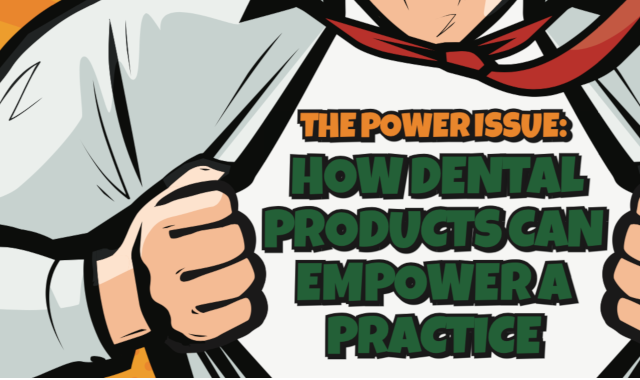
Shortly after receiving a radioactive spider bite and developing superpowers, Peter Parker’s Uncle Ben famously told him, “With great power comes great responsibility.”

While Uncle Ben gave the young Spider-Man that advice in 1962, that guidance is especially relevant for dentists in 2019.
An important element of power is balancing the notions of better, faster and safer, all while being both a responsible clinician and business owner.
“Maybe that even means how I utilize my team,” Dr. Jason Goodchild, DMD, director of clinical affairs for Premier Dental observes. “So, for me, I think an overarching theme of ‘power’ is how to marry all of these things to achieve that-which results in better patient care and better business outcomes.”
Powers-and the benefits reaped by both clinicians and patients-are achieved through any number properties, and they can be personified by some specific superheroes.
Strength
When Dr. Bruce Banner was accidentally exposed to an extreme amount of gamma radiation, the result was the creation of his alter ego, The Hulk. The Hulk’s superpower is his incredible strength. Strength in the dental office comes in many forms, from restorative materials’ potency to the power achieved by equipment.
Materials
An age-old concern for dentists (and patients, alike) is a restorative material’s strength. For instance, dental zirconia dates back to the 1980s, but only in the last decade or so has it become a leading fixture in restorative materials.
“Technology has been evolving over the past few years, and as it is evolving, dentistry is rapidly adapting to it. This is co-evolution.” Dr. Srid Janyavula, DMD, MS, dentist and manager, global clinical affairs, Dentsply Sirona says. “We are another step closer to the intersection of biology and technology. Today, we have stronger multi-purpose materials that didn’t exist a decade ago, and these advancements came in stages that we couldn’t have predicted in the past. This new age of stronger materials are shaping what we do and how we do dentistry-a modernized reset to our clinical decision-making, except for being better. They empower the clinician’s and the patient’s choices to better address the clinical needs with well-informed decisions and manage the expectations better than we were able to do before. This is just a glimpse of the digital future and we are at the cusp of experiencing the greatest burst of innovation and simplification in the human history.”
Stronger materials mean more treatment options.
“A stronger material simplifies everything from tooth reduction to bonding protocols and inventory,” Dr. Srid says. “They fundamentally can break free from the long held binary view of restorability/non-restorability by saving more tooth. This led to a new era of bulk filling materials, stronger translucent zirconia, chairside fabricated prosthesis and functional clear aligners. etc. And, ultimately, through enhancing the patient’s experience, reducing the chairside time and making procedures affordable it is a win-win, both for the dentists and for the patients, at the same time.”
Strong enough?
Every year, materials seem to get stronger and stronger. But at some point, are the materials strong enough? In other words, is having the strongest material simply a manufacturer’s bragging rights?
“When we talk about the strength of a dental material or the strength of the bond between dental materials and the tooth, we always look for the tallest bar on the chart,” Dr. Nathaniel Lawson, DMD, director of the division of biomaterials at the University of Alabama at Birmingham School of Dentistry says. “But at some point we can ask ourselves, ‘What number is high enough and when does increasing strength further produce no additional benefit?’
“There are a couple ways to look at that question,” he continues. “First, you can compare strength values to materials that have historically performed well. For instance, it takes a similar force to fracture the porcelain off of a 1.5 mm PFM crown as it does to fracture a 1 mm thick zirconia crown. Since we consider PFM crowns to be a reliable treatment with a long track record of success, we could expect similar results from a zirconia crown at 1mm thickness. Another option is to compare strength values to those found in nature. So, if you want to know what force should a crown achieve prior to fracture, you can suppose that an average chewing force on a molar can range between 20-80 N (approximately 5-20 lbs.) and maximum clenching forces can reach as high as 400 N (approximately 100 lbs.). High strength ceramic crowns, such as lithium disilicate or zirconia, can resist fracture up to loads around 3,000-5,000 N (750-1,250 lbs.).”
Equipment
Equipment, such as handpieces, must deliver the kind of power that dentists need. In some capacities, however, the power of given equipment delivers on several fronts. For instance, Dr. Christina Do, DDS, a general dentist at Smiles4OC in Costa Mesa, California, says that she has achieved different forms of power, thanks to her Waterlase laser from BIOLASE.
The power needed for clinical success... Dental handpieces combine torque and speed to deliver the kind of power dentists expect.
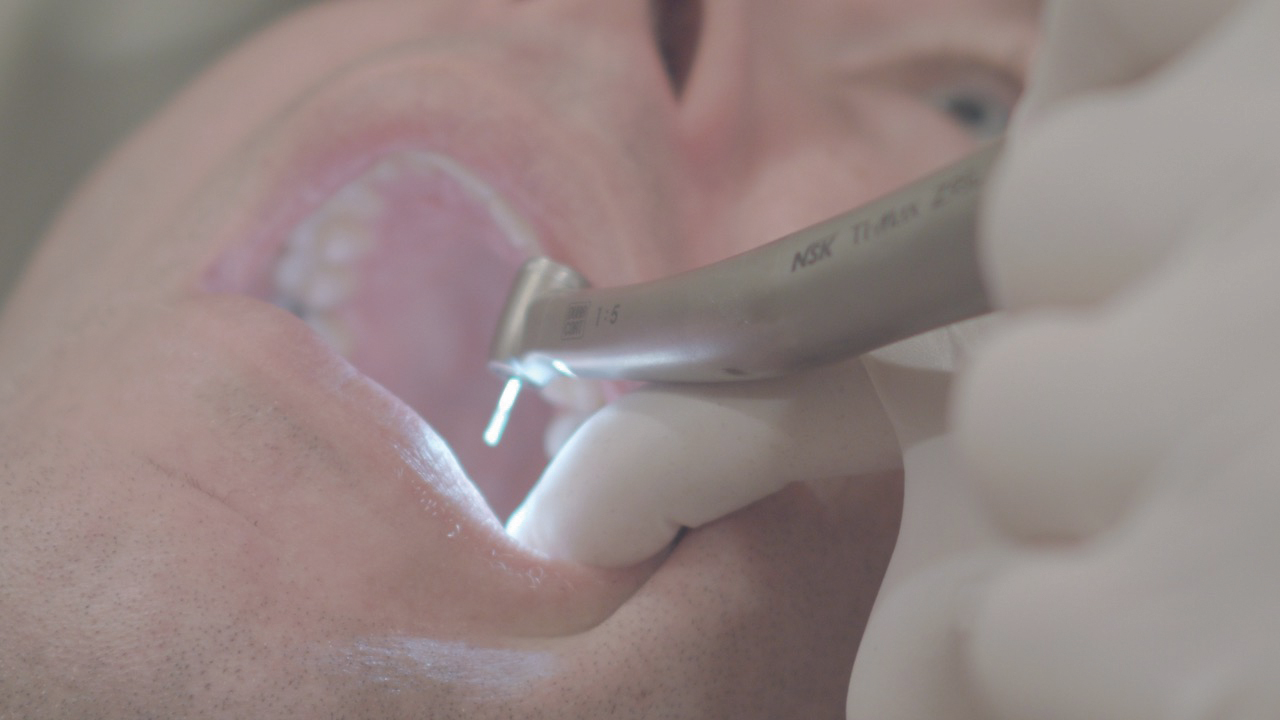
First, it performs its primary purpose as a piece of clinical equipment.
“I use the laser on virtually every patient who needs dental procedures,” she says. “It can be gum tissue needing trimming or a cavity that needs to be removed, conservatively; the laser is my go-to instrument. Any patient who needs some form of dental procedure, I’ll find a way to use it on them. Through years of using it, I know patients have less postoperative discomfort and better healing by using that laser.”
Not only has it been an effective dental instrument, but it has also served as a means of developing her practice.
“It gives me the power to promote my career and to do dentistry in a different, more modern day, technological way,” Dr. Do says. “It allows me to market myself as a dentist with a better way of treating my patients. I market myself as a dentist who could do fillings without anesthetics for patients who have higher anxiety or patients who have sensitivity. In that regard, it has been-and continues to be-a powerful practice builder for me.”
The sum of its parts
“Power” isn’t simply a measure of one metric. All of the equipment’s features and functions must work together to deliver muscle, effectiveness and control.
“When it comes to rotary cutting instruments, especially dental high-speed handpieces, the cutting efficiency translates to ‘power,’” Alfred Hayrapetian, product manager, NSK America Corp. says. “Either with air or electric handpieces, that power is always the combination of the rotational speed and the torque. With more power you can cut faster, with less pressure and fatigue in your hands. For a dentist, it’s not important how fast the bur rotates, but it does matter how fast the bur cuts the hard ceramic or zirconia. For example, with air-driven high speeds, normally the bur rotates faster than electric high speeds, but their cutting power is much less. Because electric handpieces, in general, have higher and more consistent torque than air-drivens, which means they are more powerful handpieces.”
Hand-in-hand with that notion of strength, handpieces must also be controllable.
“Higher cutting power is always appreciated by a dentist specially for cutting some of the new all-ceramic or zirconia crowns,” Hayrapetian says. “Therefore, there is no such thing as too much torque or a too-powerful handpiece. However, that power should come with a smart control system, resulting in safety and accuracy of cutting to reduce trauma to the healthy tissue. Controlling the speed is needed the quality and the speed of cutting for all sorts of different procedures. With the NLZ electric system and Z-series handpieces, you can control the speed very precisely, and also make sure the safety functions are in control. We always need equipment which cut the modern hard materials easier, better, faster.”

Speed
The Flash’s superpower is his incredible speed. He’s able to run, move and exhibit superhuman reflexes. In the dental office, speed’s power is manifested by faster, more efficient tools and processes. Speed can encompass such elements as how fast a material polymerizes, the rotational speed of a handpiece or how soon CAD/CAM can deliver a completed restoration.
Balance
On the surface, speed seems like a good thing. That is, the faster something is accomplished, the happier the clinician and the patient. However, drill a little deeper, and speed comes with some caveats.
“It is good, as long as equals quality,” Dr. John Flucke, DDS, technology editor for Dental Products Report says. “A friend of mine once said to me: ‘Speed, quality, price – you can pick any two’. With healthcare, speed and quality are the two important pieces. You may have to pay a little bit more, as the doctor, to get into something that provides speed and quality, so that price may not necessarily be there.”
But, for many aspects of the dental practice, speed does improve processes.
“Looking at CAD/CAM and digital impression systems, those have become so amazing,” Dr. Flucke says. “You can send a good clinical case with a chairside impression scanner, really, in less time than it takes to take a traditional impression, and with all the accuracy and all the benefits that that entails. In my office, we can scan for a single-unit in four minutes- easily-and the impression material that I use sets up in five minutes. Then you’ve got the other assorted and sundry things that go with that, that takes even longer.
“I would also count electric handpieces,” he continues. “They let you work faster with more efficiency, so the amount of time you actually are performing dentistry on a patient is less and they are more precise. But you also have that initial cost outlay of electric.”
Control
It may be possible to do things faster, but it’s necessary to ensure that those things are being done with quality in mind.
“A lot of times when we speak about increasing the speed at which a procedure is performed, the term speed has a greedy or sloppy a connotation,” Dr. Lawson says. “But in some ways, procedures that are simplified to increase speed may be able to improve clinical outcomes. For example, most chemists who develop bonding agents would probably rather produce a two-bottle bonding agent so they can separate things that don’t belong together, like hydrophobic and hydrophilic molecules. And many of the materials with a long clinical track record have at least two bottles. But two-bottle systems require more time to apply and each step requires specific application instructions.
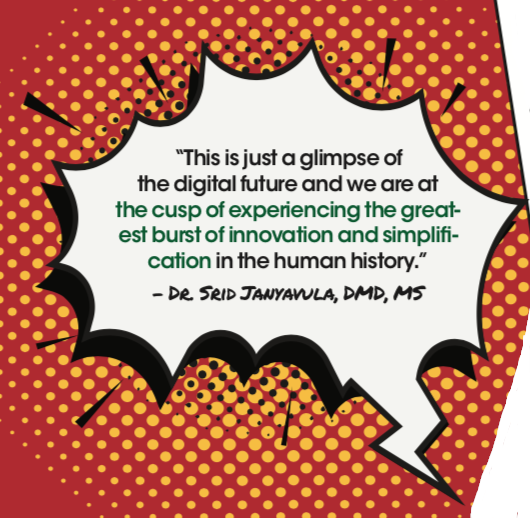
“Under ideal conditions of treatment, under rubber dam and an operator who is familiar with the nuances of the instructions for use, a two-bottle system would likely produce a better clinical outcome,” he adds. “Recent surveys have shown that only 37 percent of dentists use rubber dams for restorative procedures, and those dentists only use them for 31 percent of their restorations. So, if the dentist is using a one-bottle adhesive, that reduces the amount of time for which it is critical to maintain isolation. Additionally, a one-bottle system also reduces the chance that a dentist confuses an aspect of the application technique.”
Faster is not necessarily better, especially when a powerful piece of equipment that requires precision handling is concerned.
“The idea is how well can that power be controlled?” Dr. Goodchild says. “When it comes to dentistry, the handpiece is like your paintbrush. Using that that hand piece to create these very small cavity preps with a specific geometry and prevention of iatrogenic damage to other teeth or tissue. There must be a balance between that added power, added potential speed or torque with the idea of, ‘Can I still use this as my paintbrush and create all these wonderful shapes with incredible precision at dimensions of one millimeter or less? Again, it’s this balance. I think that maybe Spider-Man said it right: ‘With great power comes great responsibility.’
Vision
Superman is perhaps the best-known superhero, possessing any number of superpowers-but for this discussion, let’s focus on his vision. He is able to see objects from miles away, observe incredible detail on nearby objects and cut through items with a powerful, laser-like vision.

In the dental practice, that power is achieved through loupes, scopes and advanced radiography systems.
Amalgamation
Imaging is a vital component of delivering good dentistry, and integrating that with the practice management system provides access to those images in any number of places.
Mike Fillmore, senior marketing manager for Henry Schein One’s Dentrix, illustrates how Dentrix Smart Image facilitates imaging integration.
Fillmore says, “What isn’t widely adopted in the industry yet is that these two softwares (practice management systems and digital imaging systems) should be operating as one, almost like a single system. There should be a communication that happens there. For instance, you wouldn’t hire staff members if they spoke different languages, or didn’t speak at all. It would hurt your productivity. That’s kind of what Smart Image, in a nutshell, is. It’s the strategy or the purpose behind what we made-that vision of making sure that digital imaging and practice management systems are built around the patient record.”
Imaging and patient records should not only coexist together, but they should complement each other, Fillmore observes.
“Patient records live inside of your practice management system, like Dentrix, but some very important pieces of that patient record are wrapped up in digital imaging systems,” Fillmore says. “So, it’s powerful to put them together the way that dentists need them put together, having everything you need in one place to co-diagnose with a patient or to make sure that you’ve got all the diagnostic information you need at your fingertips, inside the patient chart. It doesn’t take a couple of different clicks-that people have right now-to do that. And there’s custom bridges, exclusive bridges, that operate with different practice management vendors and different imaging vendors, that the dentist has to deal with. They don’t have control over it.
“What it means today, is if I have Dentrix,” he continues, “I usually am going to choose a Dentrix-friendly imaging system, because they have a custom bridge that works really well. If I’ve got Eaglesoft and Patterson, I’m probably going go with a Patterson-friendly imaging system, because they have a great integration relationship. What that does is put more of my information in one place and streamlines more of that workflow, so I have to click less to see what I want.”
Loupes
Superman may be able to use his extraordinary vision to see things close-up, but mere mortals may need a little bit of help. Loupes are nothing new, but they’ve become more common and help clinicians see the things that they need to see.
“When I was in dental school, very few people had loupes,” Dr. Goodchild says. “Now, everybody has loupes. Everybody has magnification. In some schools, it’s required as a part of a freshman package or an equipment package that you purchase. Everybody also has additional illumination, which means they’ll have an LED headlight. So, you not only you have a magnified view, but you have to have targeted light. It’s really commonplace, now. It’s more unusual to see people without loupes practicing than with them. It seems like it’s everybody on the team, too. I’ve seen most hygienists, now, wearing loupes.”
While being able to see what one is working on is, of course, important, there is another factor involved: The clinician’s health.
“Eye health is incredibly important,” Dr. Goodchild says. “It’s not just the eyestrain. We try to crane our neck so we’ll see things better. And what about the bright lights? The LED illumination, the blue lights to polymerize composites. Again, there’s this power balance, which is, we have incredible magnification, and what comes with incredible magnification is incredible light, very bright light. And that can also be sort of detrimental to your eyes. We’ve come so far, we can see things so much better, but we also have to be recognize with that comes a renewed focus-no pun intended-a renewed importance on eye health.”
Radiography
In order see what’s not readily visible, dentists rely on radiography. It’s no secret that dental radiography has evolved since it was brought to dentistry in 1895 by Dr. Otto Walkhoff, a dentist from Braunschweig, Germany. In the 124 years since, impressive gains have been made. From their humble beginnings as fuzzy X-ray images to their current state as color, 3D images on a computer screen, dentists can see things better than ever.
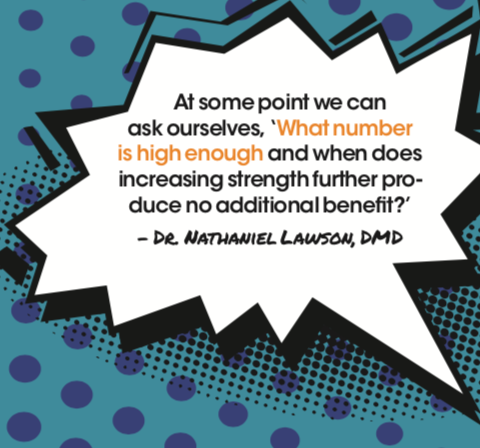
“When I started was probably D-Speed film that you squinted at if you wanted to see things on it,” Dr. Flucke says. “And now, we’re at a point with sensors that take remarkably high-def images that you can then throw up on a 45-inch monitor if you want to and look at. It’s the ability to change all the parameters. You can increase the contrast ratio, decrease the contrast ratio, colorize, all of those things. It’s a completely different diagnostic world in radiography that probably will continue to improve just as cameras continue to improve.”
Dental radiography has changed radically in the century since it was first introduced. But some of the most impressive evolution has occurred in just the past couple of decades.
“When I was at Creighton, and I was chairman of the diagnostic sciences department, one of the parts of my department was radiology,” Dr. Goodchild says. “We were in the dark ages 20 years ago. All we really had was film, generally periapical and panoramic radiographs. Now, we’ve got cone beam computed tomography (CBCT), capable of providing all different types of views. Knowledge is power. The better we can see the problem, we can better diagnose things. The price point, recently, has made it so it’s so more accessible now.
"A proper diagnosis and what that equals, is of course, efficiencies for everybody. Better imaging can help us zero in on the diagnosis, and what that best treatment is going to be, very, very quickly. And then with the digital age, this imaging can be shared with other providers or specialists almost instantaneously, making second opinions or consults easy and fast. What that future may hold in terms of better visualization, I’m not sure, but I’ll bet that it continues on the same pathway where we’re able to see better and better quality images in 3D inside of a patient’s jaw or tooth.”
Intelligence

It could be argued that Batman is the best superhero, precisely because of his lack of extraordinary powers; he’s just a normal, everyday billionaire who gets his edge from his intelligence (the same could be said of Iron Man, of course, but we address his leadership superpowers our companion article, Managing the Power Dynamic of the Workplace).
Intelligence encompasses many different areas of the dental practice from the clinicians (the type of continuing education that they receive) to practice management software (how well it helps run the practice) to all the data the practice collects (what it can tell the practice about itself and its patients).
Data
The paperless office may not be the norm just yet, but there’s no doubt that computers play an integral part in managing the practice. Practice management software coordinates any number of tasks at the dental office, and the intelligence gained from those systems is an important power. Twenty-first century business is awash in data, and the dental practice is no different. While large practices already know this, smaller practices should take advantage of the opportunities.
“Everybody’s swimming in data,” Fillmore says. “Big Data has been a thing for at least 15 years in the high-tech industries, and it’s coming to a solo practices, DSOs and multi-sites. Corporate dentistry, for example, already knows this. They’re swimming in data and they need insights or they need someone who’s able to parse that data in a useful way to give them actionable intelligence. There’s no reason that we can’t offer the same thing to solo practices or to your small and medium business owners.
Combining the power of vision and intelligence... Dentrix Smart Image is designed to combine the features of practice management software and image software
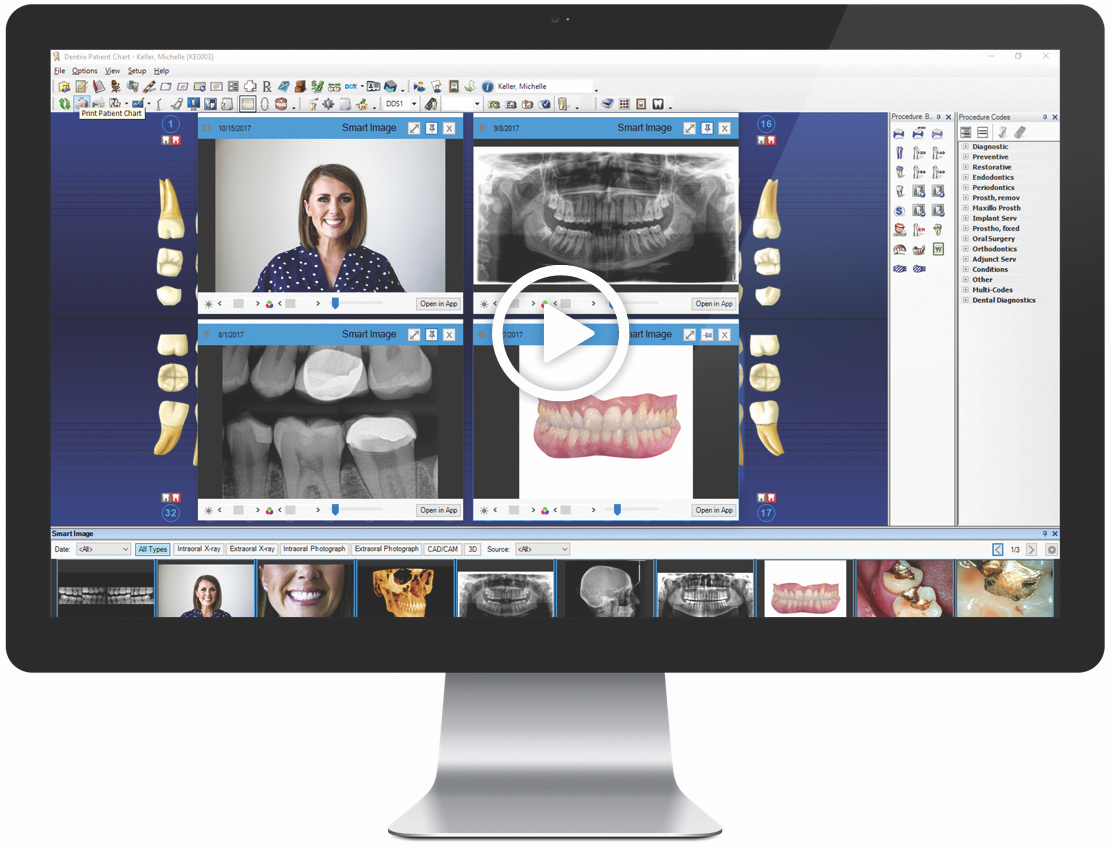
.“Intelligence means data intelligent insights from the data you have,” he adds. “That data often centers around your patient file, which means practice management systems are a good place to start looking for those insights. Your PMS vendor should be giving them to you. Take Dentrix’s Practice Advisor report as an example. It doesn’t just tell you how many patients you have or what your income is, it tells you how close to your goals you are and what you can do to improve your KPIs.
“It’s always been the same,” he continues. “It’s garbage in; garbage out. And right now, I feel like there’s a lot of garbage data swimming around in a lot of practices. You take things like this, which streamlines workflows across disciplines, across clinical, financial and patient information barriers. First of all, that helps clean your data and it helps allow your people to focus on more important things, rather than mundane and repeatable tasks.”
Practice management software is a key tool in coordinating that data intelligence.
“Practice-wide reporting and workflow automation are key,” Fillmore says. “Yes, it’s important to have insurance management software, clinical solutions, software to help you manage all those aspects of a dental office, but they should all be talking together to make your practice more intelligent and to give you more intelligent insights into your patients’ behaviors, your patients’ treatments; how they accept them and at what percentage; what your active patient base looks like; what your production mix looks like. These are all things that are really important for a practice owner to understand.”
Continuing education
In order to maintain their state licensure, clinicians are required to earn a certain level of continuing education (CE) every year. That was, historically, accomplished by showing up and taking an in-person class. In this day and age, however, CE can be delivered not only through those traditional classrooms, but there are distance-learning, Internet-based resources available.
“I like to use the word upskill,” Dr. Goodchild says. “Upskill the provider. You’re the dentist or the hygienist , and you learn what’s new in dentistry, new philosophies, new equipment, new therapies, whatever. CE is more accessible, easier to get than ever before. When I graduated dental school, I’m not sure that we even had online CE programs. Now, there are a variety of free programs. They can take CE anywhere in the world, anytime, from their living room, while they’re sitting in their pajamas, and get all kinds of CE – and very high quality CE. Lots of web platforms offer low-cost CE-some platforms even provide free CE.”
The more high-tech dental equipment becomes, the more clinicians need to be upskilled on its use. Happily, the resources are available to help with that learning.
“Learning technology has never been this easier,” Dr. Srid says. “Technology usually starts at the low end of the spectrum before it becomes mainstream. First, it used to be a thing for the hobbyists and the hacks, tinkering their way through a period of non-integrated systems. Sometimes innovation is about timing, especially if you look at the adoption in the past two, three years-it’s rapid. In a short amount of time, a new market is invented for devices like CEREC, clear aligners that people clearly didn’t think they want or need.
“We modernized dentistry with this sudden exponential J curve demand,” he continues. “Every year, things are being smaller, powerful and less expensive. I think that’s where dentistry is going, and there will be people who will be early adopters and there will be people who want to do the catch-up and there will be people that who want to be Luddites-they try to battle the technology. But, of course, as dentists, we should work and use and learn things that make our patients’ lives better, not what makes our life better. Now the time is right and the atmosphere is super charged. It is important that we are a part of the new destined changed course as science is an endless frontier.”

Stretching
After being bombarded by cosmic radiation, Reed Richards became able to stretch his body into any shape he desires, thus metamorphosing into Mr. Fantastic.
While dentists aren’t reaching to retrieve an item from a cabinet across the room, stretching encompasses such issues as multitasking products, materials and equipment, as well as clinicians and staff being able to perform more than one task.
Cross-training
In some offices, staff are willing to take on additional roles, which can be a huge benefit to the practice.
“A lot of dental offices have people that can do multiple jobs,” Dr. Goodchild says. “That was how I wanted to structure my practice, so that if people were out or people were busy, everybody could step in and help, because everybody had to wear multiple hats in the practice.”
By virtue of their concurrent roles as business owners and clinicians, dentists are already expected to be cross-trainers. To some extent, that can be extended to staff.
“The assistant needs to know how to make appointments and answer the telephone. The office manager does billing,” Dr. Goodchild observes. “They do insurance, they do customer service, they do appointments. They may manage the lab cases. There are so many jobs within a dental office that everybody has to wear multiple hats. And that is why those kinds of people become so valuable and so sought after.”
Related reading: 3 reasons you should cross train your team
Multitasking
Multitasking can be a great way to give staff the opportunity to spread their wings. It is also a great way to improve workflows around the office, including the use of CAD/CAM equipment.
“Not all tasks are created equal,” Dr. Srid says. “Multitasking can demolish the office silos, makes the process open, allowing everyone to tune-in, progress and learn to work as a team. It is how you invest in your staff, and one of the primary drivers to improving the productivity and efficiency in the practice. There are many ways you could really multitask, from better scheduling to better patient communication to better use of technology while the patient is in the chair. Advances in digital technology make the moment ripe, and it makes sense to do it now. And how do you do it?
"One is the cross-training that you possibly could leverage from some of the technology that we have today. You’re able to better prep and the assistant is able to design and mill the crown, doing all the chairside work more efficiently and effectively without any challenges. Today, with the help of a CEREC, you could do very much everything. Everybody could get a diagnostic baseline scan in less than a minute, let the scan integrate in to the practice management software and that can go into the patient’s permanent record. You could do your orthodontics, you could do your posterior crowns. You could do an implant custom abutment and the crowns. You could make a provisional or temporary crown. You could make up to a four-unit bridge. You could make surgical guides. They’ve really become a multipurpose and multifunctional tools. As for the practice, it’s like winning a triple prize: Satisfied patients plus reduced time waste plus lower costs .”
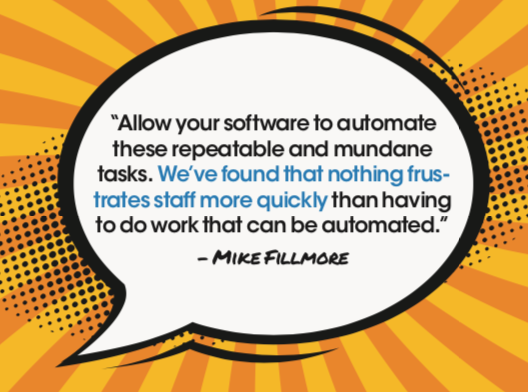
Multitasking can be a noble pursuit for some, but for others it can be overwhelming. To help alleviate that trepidation, properly engineered software can step in.
“You don’t want to stretch staff too far,” Fillmore says. “It frustrates them. There are seemingly contradictory things we hear from staff all the time. ‘I have too many things to learn; too many pieces of software; too many pieces of technology that I’ve got to be an expert on, and I can’t be. I just don’t have that kind of time.’
“The other thing we hear at the same time is, ‘The software is so complex, especially practice management systems’,” he continues. “They’ve been around for 25 years and they do a lot and they don’t know it well enough in order to be able to utilize it the best they can. They’ll seem contradictory. But what we see is that people want to be passionate and people want to be specialized.
“So, what they can’t be is total practice experts,” Fillmore adds. “You have to be able to allow your roles to specialize in the practice and allow them to be deep and knowledgeable about those subjects. Get them business training. First off, if they’re going to be an office manager, for example, and they’re focused on that area, and then help them get specific about the areas of business you want them to manage. Then, if they’re going to use a limited amount of applications that are related to their jobs, if they need to learn Dentrix, make sure they’re learning the appropriate pieces that apply to them.
“Sure, they may need to cross-train some to cover other responsibilities of other staff, but that should be the exception, not the rule,” he concludes. “They can have some high-level training on the whole thing, but allow them to specialize. Once you allow your people to become deep specialists within certain areas of your business and of your practice, then allow your software to automate these repeatable and mundane tasks. We’ve found that nothing frustrates staff more quickly than having to do work that can be automated.”
Pain and anxiety management
The concept of “stretching” can also be applied to doing something in an unconventional way. Rethinking pain management can be one of those ways.
According to the National Institute of Dental and Craniofacial Research, in 2016, 42,249 deaths were attributed to opioid overdose. Since 2016, the National Institute on Drug Abuse says that opioid overdoses increased 30 percent from July 2016 through September 2017 in 52 areas in 45 states.
Further, National Institute of Dental and Craniofacial Research writes, “Dentists prescribe approximately 6.4 to 8 percent of opioid analgesics dispensed by outpatient US retail pharmacies annually and are the highest percentage prescriber group for patients between 10 and 19 years of age.”
Some dentists are turning to hemp extracts as a replacement for or adjunct to conventional pain medication. Carolina Hemp Company markets its Kingdom Harvest hemp extract to dentists. The product can be used before a procedure to put patients at ease, and then following the procedure to reduce pain and promote healing.
“We have a pipette system that is distributed with our products to the dental offices,” Waylon Ford, Carolina Hemp Company CBO, marketing strategist and hemp advocate explains.
“Carolina Hemp Company provided a digital pipette system that allows us to give a 0.5 mL serving when their patient comes in,” Beth Clifton, office manager at Dr. Larry G Hubbard, DDS of Statesboro, Georgia, says. “It lowers blood pressure, preemptively attacks any inflammation that will happen during the procedure and also lowers the anxiety and stress of being at the dental office. It allows the use of less anesthesia and may keep practices from having to put patients under as often.”
The power of Stretching includes trying new things...One example is finding new ways to manage patient anxiety such as using Kingdom Harvest hemp extract which can be administered prior to dental procedure to relax patients.
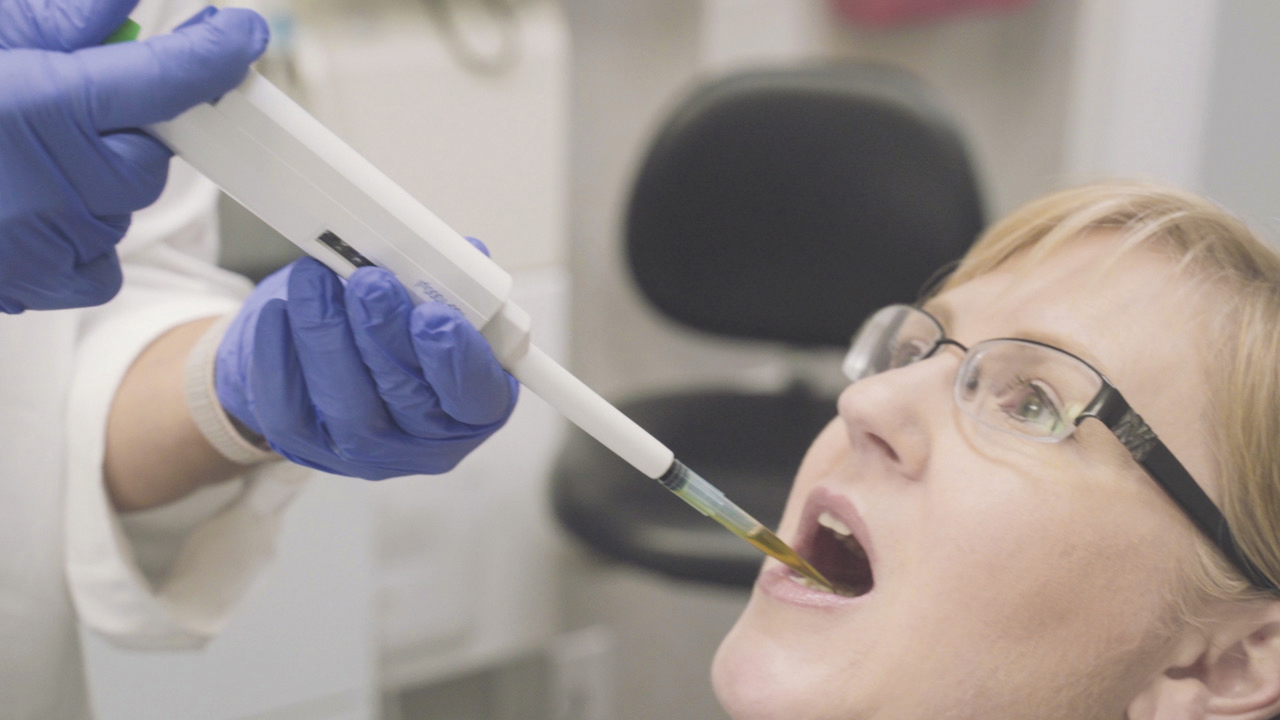
Each person’s unique biochemistry means that the extracts can be more or less effective, but Ford says patient response has been overwhelmingly positive.
“The patients are administered a 0.5 mL dose and then relax in the waiting room,” he notes. “Within an average of 15 minutes, they start feeling our Kingdom Harvest whole-spectrum hemp extract and that’s when they’re called back into the office.”
“We have yet to have anyone say that they did not have the most relaxing and best experience in the dental office as they started taking the Kingdom Harvest before their procedure” Dr. Larry Hubbard, DDS, says.
After the procedure is completed, patients can buy a bottle to bring home to help with pain management.
“On the way out, as another preemptive measure, dentists can sell them a bottle of Kingdom Harvest,” Ford says. “That, coinciding with their standard hygiene care and oral health care, can help defeat gingivitis, gum disease, and bone decay.”
Hemp extracts differ from marijuana in that they provide relaxation properties, but without the psychotropic effects.
“The THC is very little; it’s over 10 times less than the legal limit,” Ford says. “It only has enough to get the other phytonutrients working. This is what makes Kingdom Harvest whole-spectrum hemp extract different from other full or broad spectrum products.
Hemp was originally a component of dental anesthetics, but in the 1930s, opposition to hemp lead to its removal from everyday life-including those dental anesthetics. Carolina Hemp Company brings that usage back to its roots.
“Hemp was originally a large part of the dental and medical industry,” Ford observes. “And then when it became outlawed, it was taken away. So, we’re actually reintroducing it into the dental industry. At one point, a hemp extract was in probably about 80 percent of the medications used in the medical industry.”
Whether it’s the restorative materials strength; CAD/CAM’s speed; advanced radiography’s vision; practice management software’s intelligence; or staff cross-training to stretch their abilities, power manifests itself in diverse number of ways within the practice. But no matter what the ability, Uncle Ben said it best, “With great power comes great responsibility.”
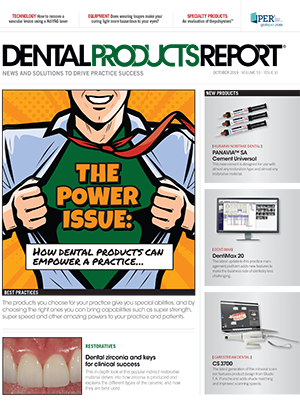
ACTIVA BioACTIVE Bulk Flow Marks Pulpdent’s First Major Product Release in 4 Years
December 12th 2024Next-generation bulk-fill dental restorative raises the standard of care for bulk-fill procedures by providing natural remineralization support, while also overcoming current bulk-fill limitations.